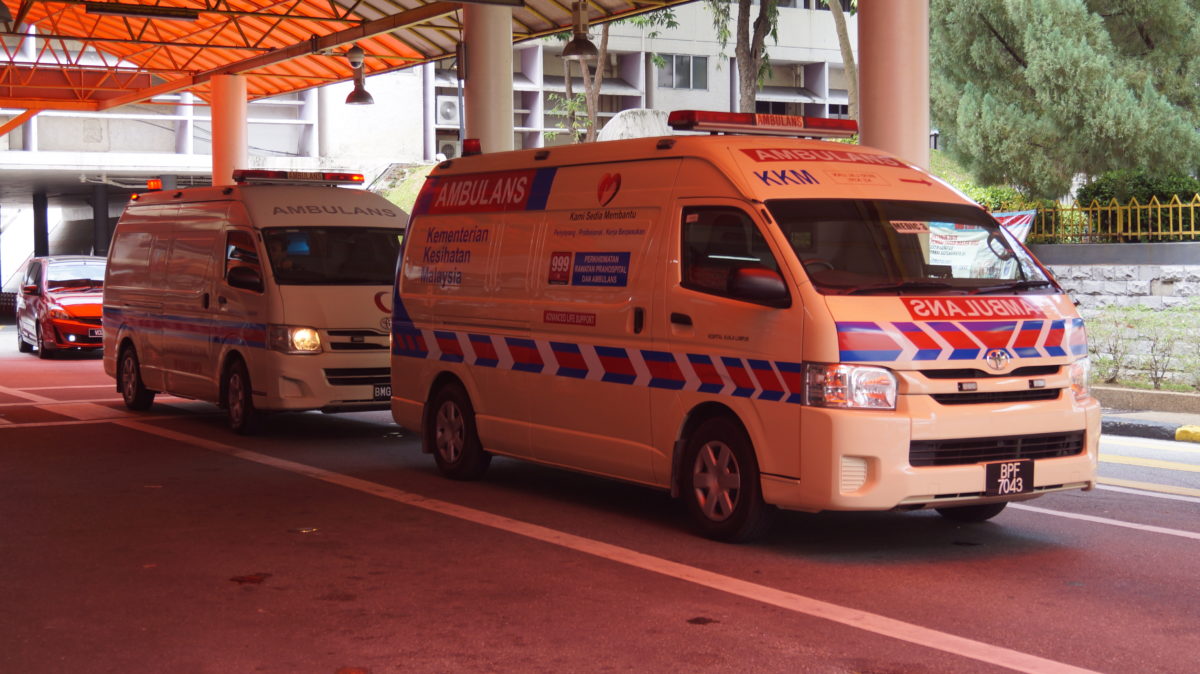KUALA LUMPUR, June 22 — Anaesthesiology and intensive care experts today urged the government to rethink plans to procure expensive and high-maintenance negative pressure ambulances to transport Covid-19 patients.
In a joint statement today, the group — comprised of the Academy of Medicine of Malaysia’s College of Anaesthesiologists, the Malaysian Society of Anaesthesiologists and the Malaysian Society of Intensive Care — argued there is no proof or mention of the role of negative pressure ambulances in any recommendations or guidelines on the transportation of Covid-19 patients.
Instead, it said measures recommended by US public health agency Centers for Disease Control and Prevention (CDC) include the use of appropriate personal protective equipment (PPE) by all personnel, separating patient and driver as much as possible, utilising air conditioning units in non-recirculating settings and using exhaust fans to maximise air changes in an ambulance.
The Academy of Medicine of Malaysia’s College of Anaesthesiologists, the Malaysian Society of Anaesthesiologists and the Malaysian Society of Intensive Care said the government must obtain precise data and evidence before embarking on any proposal related to Covid-19 infection transmission.
This includes data that suggest an increase in the number of health care workers being infected with the current ambulance services and evidence to indicate that the use of negative pressure ambulances in other countries led to a reduction of coronavirus cases.
“At this point, our three societies jointly believe that these ambulances are of no benefit in managing Covid-19 cases. We urge that future proposals that are being evaluated must be evidence-based.
“The keyword is improving outcomes while spending prudently. Negative pressure ambulances do not improve nor help improve the Covid-19 situation with large monetary consequences,” the group said.
Apart from the purchase price of a negative pressure ambulance, which is estimated to be between RM500,000 to RM600,000, there are also costs incurred with regular maintenance of the high-efficiency particulate air (HEPA) filters — which can remove at least 99.97 per cent of dust, pollen, mould, bacteria, and any airborne particles with a size of 0.3 microns.
“The expenditure to change the HEPA filters is anticipated to be about RM3,000 to RM5,000 per ambulance per month. Furthermore, the worst-case scenario is to have these ambulances sub-optimally or underperforming due to a lack of funds to maintain them,” the group added.
the Academy of Medicine of Malaysia’s College of Anaesthesiologists, the Malaysian Society of Anaesthesiologists and the Malaysian Society of Intensive Care said the government should get private ambulances and NGOs with ambulance services to assist in patient transfers — for a fee — to offset issues on ambulance availability.
Additionally, the government should also increase the number of health care workers that would allow an intermittent reprieve from Covid-19 duties to ease the load and stress experienced by the nation’s medical frontliners.
“Our societies recommend the immediate recruitment of junior doctors and nurses who have just graduated as well as converting all contract posts to permanent posts. Any surplus budget would best be spent investing in our young doctors and nurses. They have been and will be our last line of defence so that the care of the Covid-19 patients can be continued optimally,” it said.
The Ministry of Health’s (MOH) secretary-general’s office, in a statement today, claimed that a news report by national news agency Bernama had been “misinterpreted” to suggest that the government is procuring only negative pressure-type ambulances.
“The statement made by the Health Minister did not specify that all 500 ambulances are classified as a ‘negative pressure ambulance’ as understood and reported by certain parties.
“The ministry, however, sees the need for negative pressure ambulances to combat the Covid-19 pandemic at the present point and in the future. Its features include a negative pressure system, HEPA filtering and UV lamps designed for infectious diseases, especially airborne-disease types,” said the MOH secretary-general.
On June 17, the ministry posted a tender offer for the procurement of 490 types of ambulances with medical equipment for use in public hospitals and clinics throughout the country.








